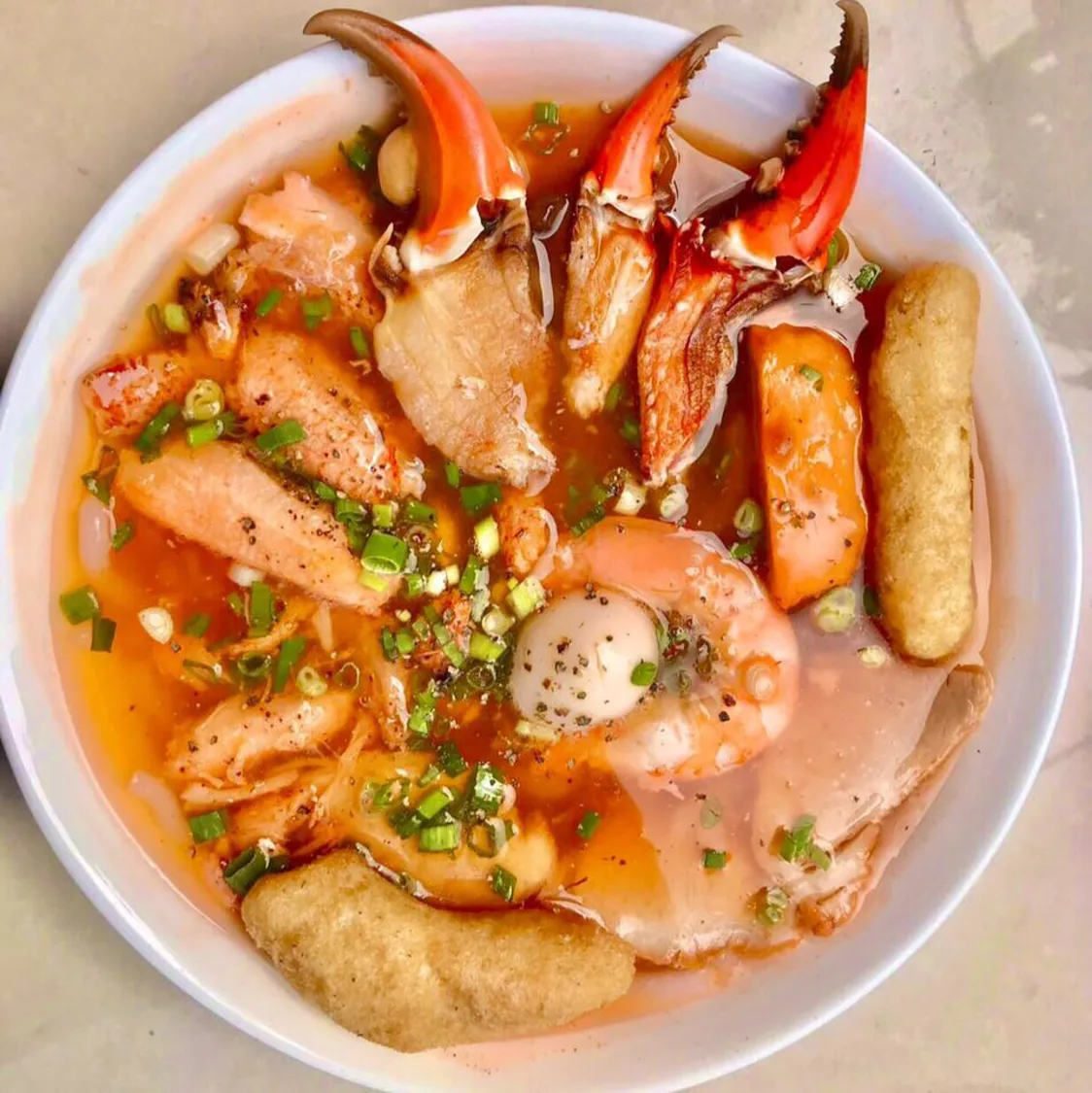
Banh Canh Cua
Thick noodle soup with crab meat.
Ingredients
- •Tapioca noodles
- •Crab meat
- •Pork
- •Quail eggs
- •Fish cake
Instructions
Make Broth
Prepare pork and crab broth
Cook Noodles
Boil noodles and add toppings
Bánh Canh Cua is a hearty Vietnamese noodle soup distinguished by its thick, chewy noodles and rich crab-infused broth. This comforting dish features a unique type of noodle made from tapioca flour and rice flour, giving it a translucent appearance and satisfyingly chewy texture.
Originally created in the southern regions of Vietnam, this dish exemplifies the country's love for seafood-based soups. The name "Bánh Canh" refers to the thick noodles, while "Cua" means crab, highlighting the star ingredient of this flavorful soup.
The preparation begins with making a rich broth from pork bones and crab shells, simmered for hours to extract maximum flavor. The soup is then enriched with fresh crab meat, pork slices, and fish cakes. The signature thick noodles are cooked separately until they achieve their characteristic chewy texture. The dish is typically garnished with quail eggs, green onions, and cilantro, with a squeeze of lime adding brightness to the rich broth.
While the classic version features crab as the main protein, regional variations might include shrimp, fish, or even snakehead fish. Some versions incorporate blood cockles or sea snails for added seafood flavor. In certain areas, the broth might be thickened slightly with tapioca starch for a more substantial consistency.
In Vietnam, Bánh Canh Cua is enjoyed throughout the day but is particularly popular for breakfast or as a late-night supper. Street vendors often serve it with a side of chili sauce and fresh herbs, allowing diners to customize the flavor to their liking. The soup is typically served piping hot, with the steam carrying the aromatic essence of the sea.
From a nutritional standpoint, this dish offers a good balance of proteins from the crab meat and carbohydrates from the noodles. The seafood provides beneficial omega-3 fatty acids and minerals. However, those with shellfish allergies should exercise caution. The soup can be high in sodium, so individuals watching their salt intake might want to request a lighter seasoning. The tapioca-based noodles make this dish naturally gluten-free, though diners should verify the ingredients in the fish cake if gluten sensitivity is a concern.
